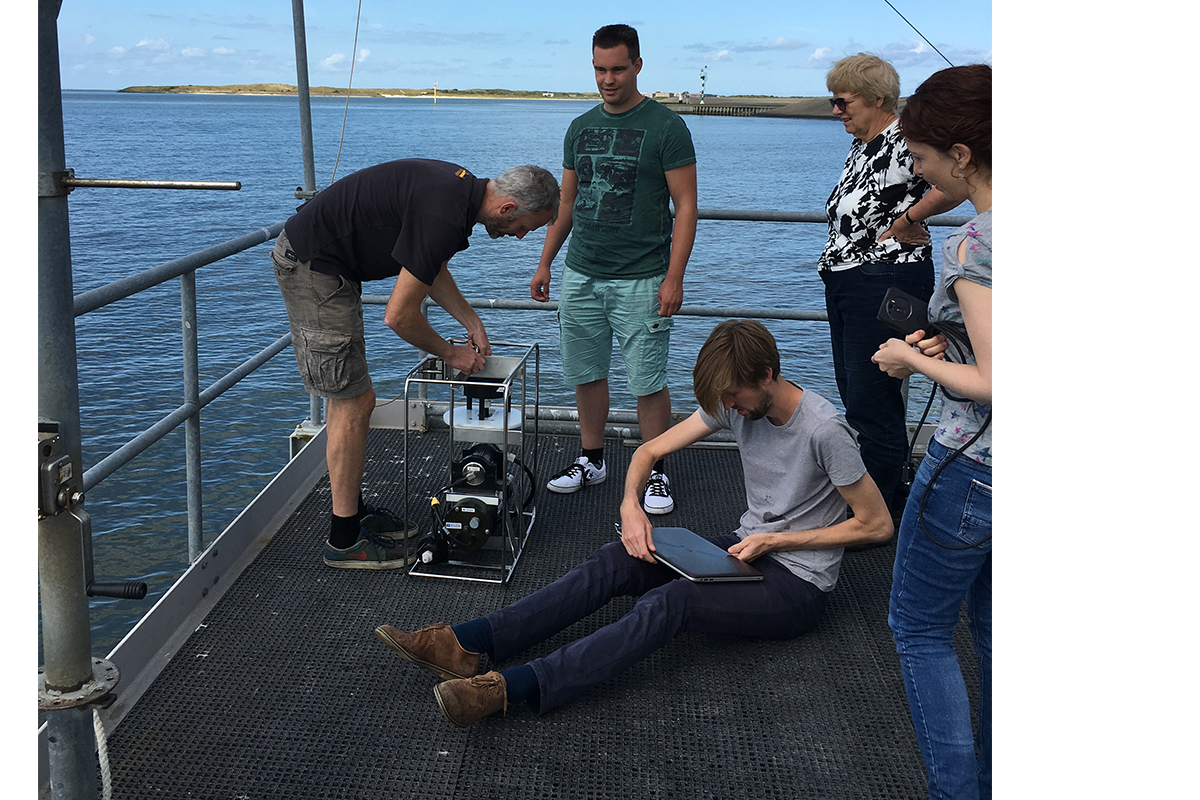PhD defence: Sources and genetic controls of lipid biomarkers involved in paleotemperature proxies
Summary
Lipids in marine sediments have been widely used in proxies to reconstruct Sea Surface Temperatures (SSTs). For example, the Uk37 proxy, based on the degree of unsaturation of long chain alkenones synthesized by haptophytes, the TEX86, based on glycerol dialkyl glycerol tetraethers (GDGTs) produced by Thaumarchaeota and the LDI, based on long chain diols by Eustigmatophyte algae. However, there is still some uncertainty regarding the biological producers of these lipids and their biosynthetic pathways. In this thesis, the pelagic and benthic archaeal community composition was investigated in multiple marine regions and compared it with the composition of GDGTs. This showed that Marine Group II Euryarchaeota, one of the most abundant marine archaeal groups, are incapable of producing these lipids. Studying three water columns in the Mediterranean Sea indicated the presence of deep-water Thaumarchaeota, which are potentially responsible for the overestimation of reconstructed SSTs in this region. Further, the biosynthetic pathway of long chain alkenones was investigated in a culture of the Haptophyte Emiliania huxleyi and identified a potential gene coding for the desaturase responsible for transforming C37:2 into C37:3 alkenones. In the African Lake Challa, a correlation was observed between the abundance of LCDs and uncultured Eustigmatophyceae algae. Besides, seasonal changes in LCD composition suggest multiple producers or changes in the LCD composition of the same producer within an annual cycle. The combination of omic (lipid and DNA) approaches in this thesis has proven to be key in increasing our knowledge on the biological producers of lipids involved in paleotemperature proxies.

Samenvatting
Lipiden in marine sedimenten zijn veelgebruikt in proxy’s om Zee Oppervlakte Temperaturen (ZOT’en) te reconstrueren. Bijvoorbeeld de Uk37 proxy, gebaseerd op de hoeveelheid verzadigingen in lange-keten alkenonen geproduceerd door haptophyten, de TEX86, gebaseerd op glycerol dialkyl glycerol tetraethers (GDGTs) geproduceerd door Thaumarchaeota en de LDI, gebaseerd op lange-keten diolen (LKD’en) van Eustigmatophyceae algen. Echter is er nog steeds enige onzekerheid als het gaat om de biologische producenten van deze lipiden en hun biochemische productie. In deze thesis, is de pelagische en benthische archaeale gemeenschapscompositie onderzocht in meerdere marine regio’s en vergeleken met de GDGT compositie. Dit liet zien dat Marine Groep II Euryarchaeota, een van de meeste voorkomende marine archaeale groepen, niet in staat zijn om deze lipiden te produceren. Het bestuderen van drie waterkolommen in de Middellandse Zee suggereerde de aanwezigheid van diep-water Thaumarchaeota, die mogelijk verantwoordelijk zijn voor de overschatting van de reconstrueerde ZOT’en in deze regio. Verder is de biochemische productie van lange-keten alkenonen onderzocht met een cultuur van de Haptophyte Emiliania huxleyi en is er een gen geïdentificeerd die mogelijk codeert voor de desaturase verantwoordelijke voor de transformatie van C37:2 naar C37:3 alkenonen. In Afrikaans meer Challa, was een correlatie gevonden tussen de hoeveelheid LKD’en en ongecultiveerde Eustigmatophyceae algen. Hiernaast, suggereert de veranderingen in de LKD compositie per seizoen dat meerdere producenten aanwezig zijn of dat er verandering optreden in de LKD compositie van dezelfde producent binnen een jaarlijkse cycli. De combinatie van lipiden en DNA studies in deze thesis is belangrijk gebleken om onze kennis over biologische producenten van lipiden, gebruikt in paleotemperatuur proxy’s, te vergroten.
